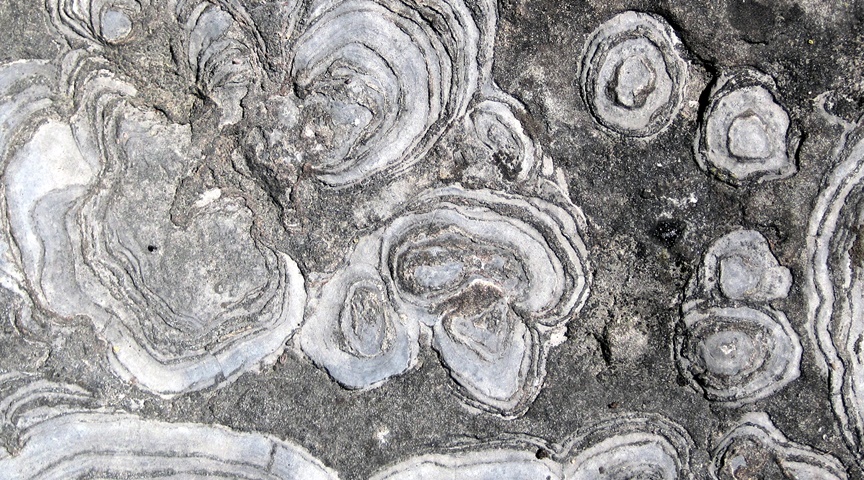Evidence from paleontology
Paleontology is the science of studying fossils—the remains or traces of ancient organisms, often preserved in sedimentary rocks. The word ‘fossil,’ like any word in English, is somewhat flexible. In paleontology, the word usually is defined to include only remains and traces of organisms from a prior geological age. According to most paleontologists, fossils provide substantial evidence that life has evolved and diversified over the past several billion years. Moreover, the oldest fossils (estimated to be roughly 3.5 billion years old)We’ll talk about the methods used to date fossils on the next page. were formed by colonies of bacteria. This supports the claim that life originated with single-celled organisms.

Some of the oldest fossils are structures called stromatolites, which were formed by cyanobacteria—cyan-colored bacteria that get their energy from photosynthesis, just as plants do. Huge colonies of these bacteria produced algae-like formations that have been preserved by fossilization.
The set of all fossils, together with geological evidence used to interpret the history recorded in fossils, is known as the fossil record. Although there are many “gaps” (missing transitional forms) in the fossil record, there are also countless examples of apparent evolutionary lineage: gradual transitions from one type of organism to another, sometimes leading all the way up to species living today.
Opponents of the theory of evolution have responded to this type of evidence in a variety of ways. Young-earth creationists propose an alternative explanation for the fossil record, contending that most fossils are the remains of organisms destroyed during the flood of Noah described in Genesis 7. In defense of this idea, they also argue that the methods used to date fossils are unreliable. (We’ll examine some of those methods on the next page.)
Other critics of evolutionary paleontology, including some who believe God created life billions of years ago, argue that the fossil record is actually inconsistent with the prevailing theory of evolution. In fact, some evolutionary paleontologists themselves have suggested that there may be problems with the standard account of how evolution occurs. According to the prevailing theory, evolutionary transitions from one species to another occur gradually over long periods of time, because genetic recombination is limited and significant mutations are rarely beneficial. (Major mutations are usually harmful and are quickly eliminated by natural selection.) However, evolutionary paleontologists Niles Eldredge and Stephen Jay Gould have argued that the fossil record tells a different story. We’ll consider their view later in this chapter. On the next several pages, we’ll take a closer look at the evidence from the fossil record.